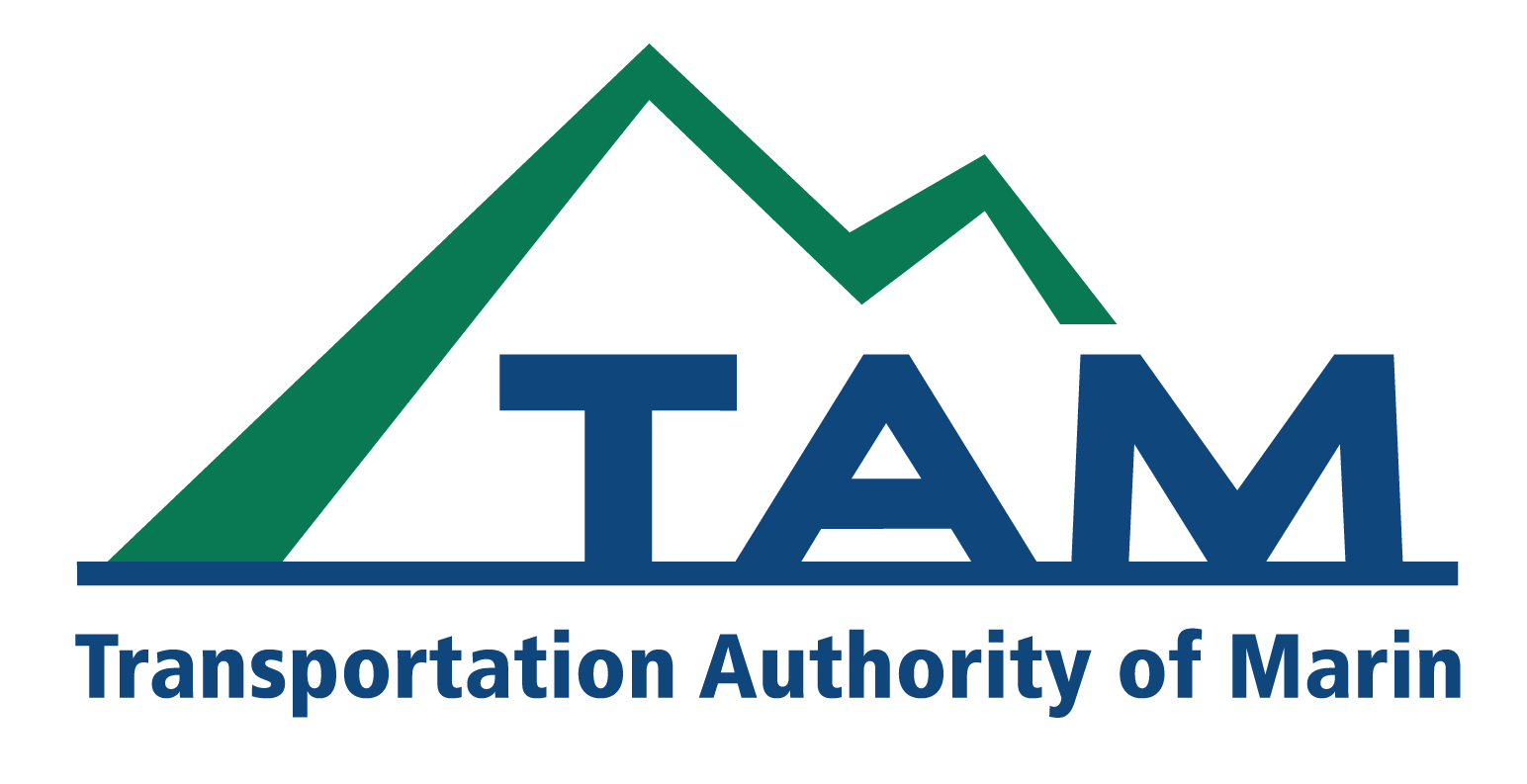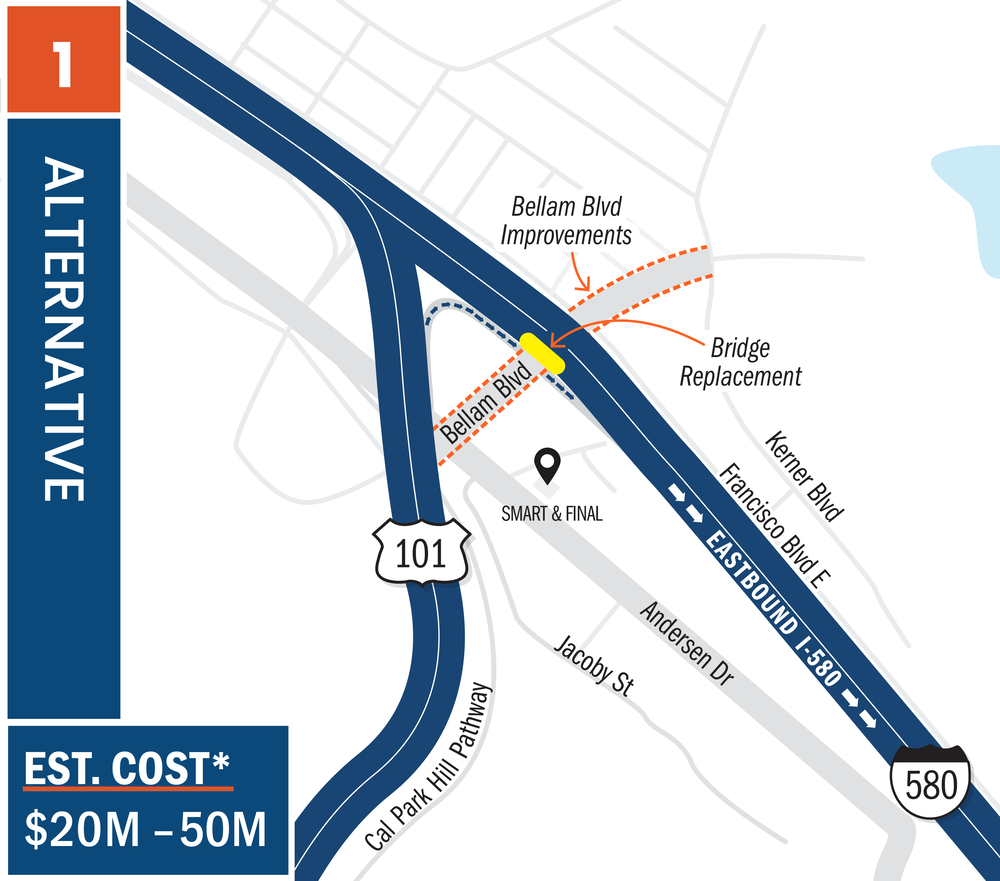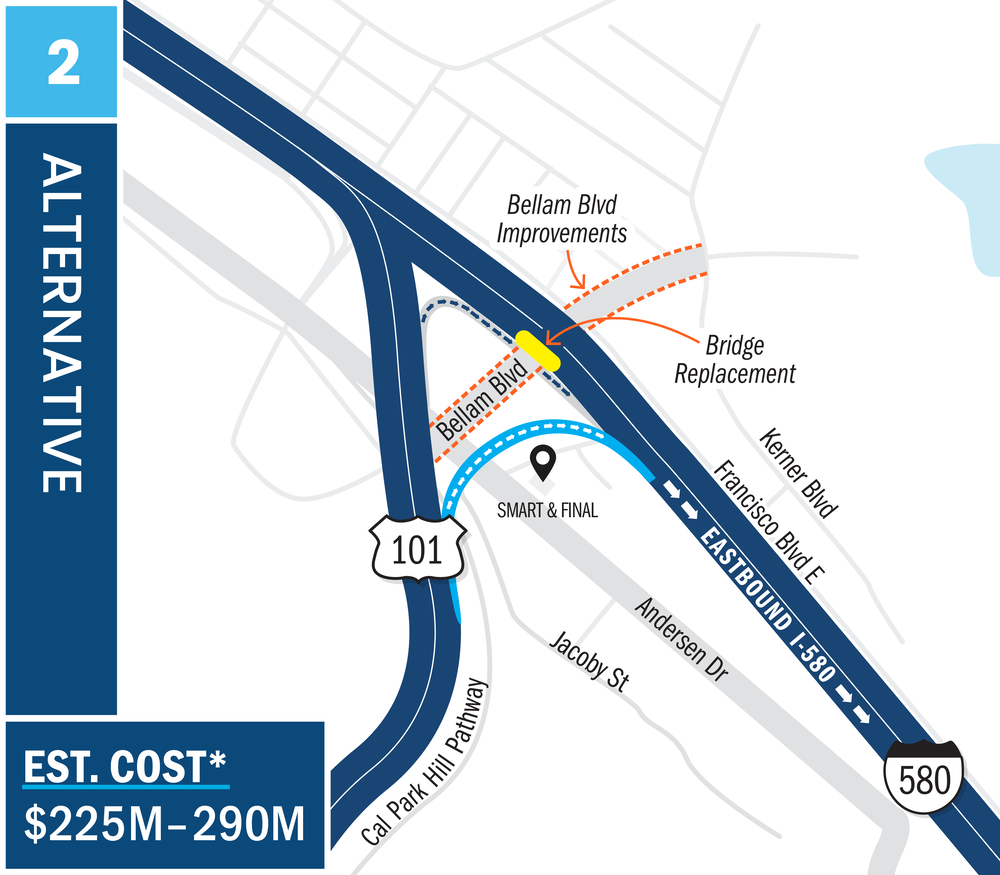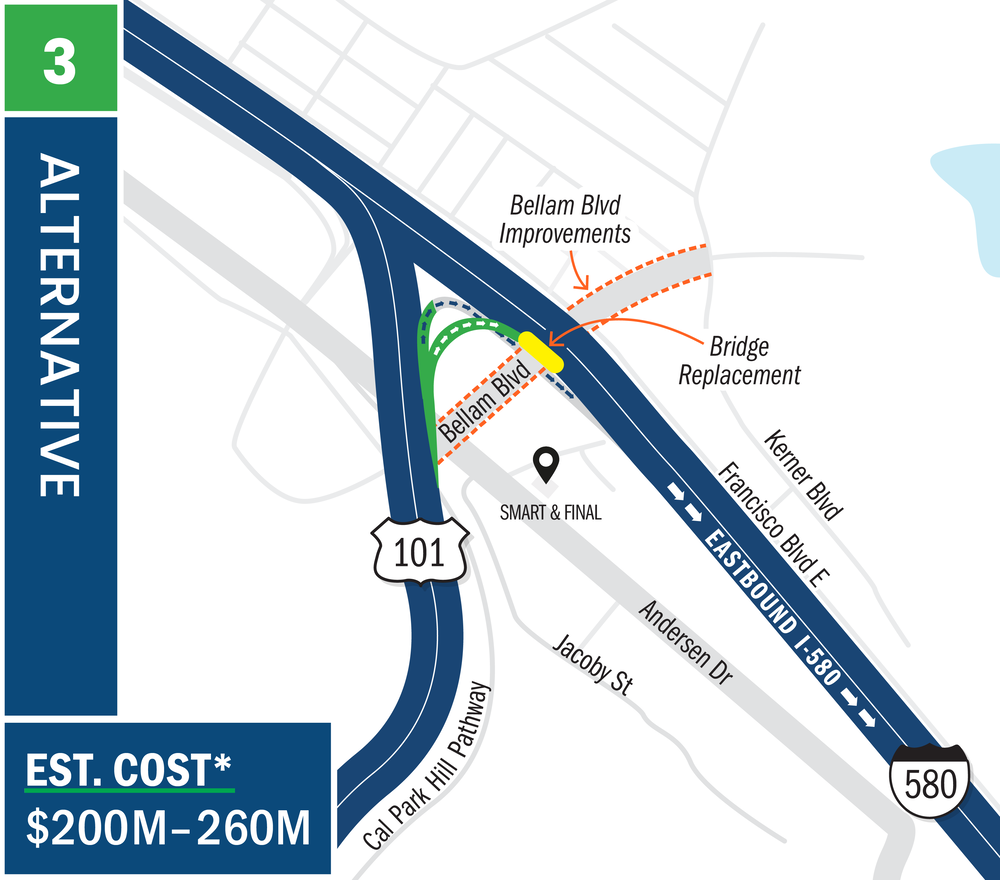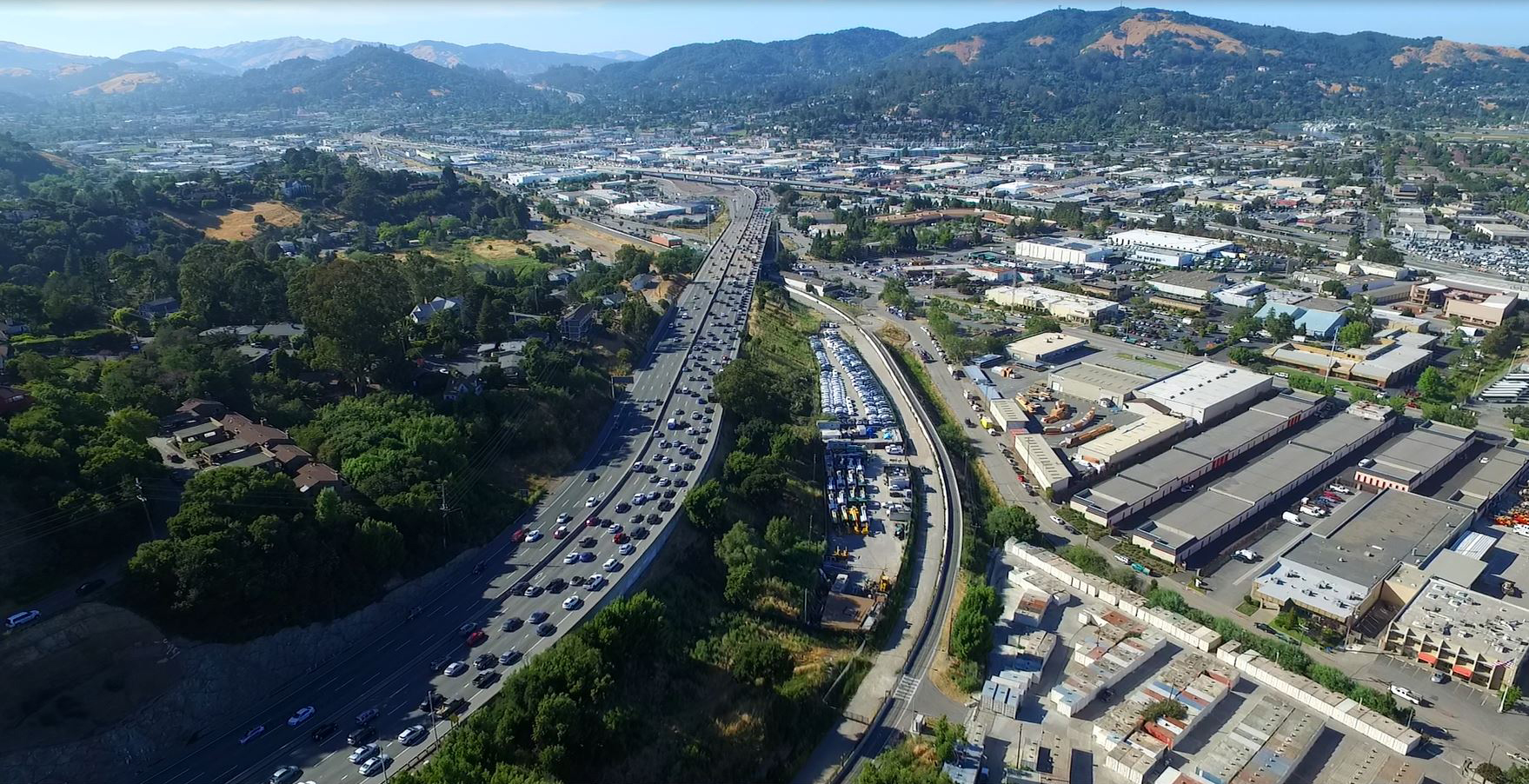
The US 101/I-580 Multimodal and Local Access Improvement Project aims to address congestion and enhance connectivity between northbound US 101 and eastbound I-580 to the Richmond-San Rafael Bridge.
Currently, drivers who wish to access the Richmond-San Rafael Bridge (I-580) via northbound US 101 in Larkspur must either exit the freeway and travel on East Sir Francis Drake Boulevard in Larkspur, or exit the freeway across Bellam Boulevard in San Rafael to I-580 and the bridge entrance.
The purpose of the project is to do the following:
- Improve regional connectivity between northbound US Route 101 (US 101) and eastbound Interstate 580 (I-580).
- Improve traffic operations on local streets and freeway segments.
- Enhance the active transportation (bicycle and pedestrian) network and improve bicycle and pedestrian safety within the community.
- Improve transit access and travel times.
- Support economic prosperity by providing better and more reliable access to local businesses.
- Improve community cohesion by enhancing local connectivity to work, school and businesses for disadvantaged communities near the project area.
TAM is currently conducting community engagement with the goal of deciding on a preferred alternative by the end of 2027. Once a preferred alternative is chosen, design and construction will take approximately seven years after the environmental document is approved, pending availability of funds.
